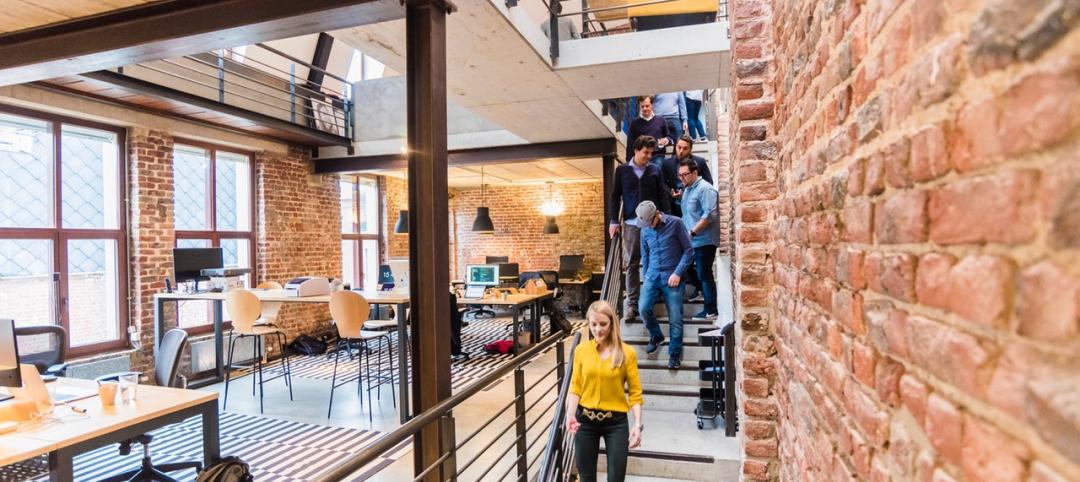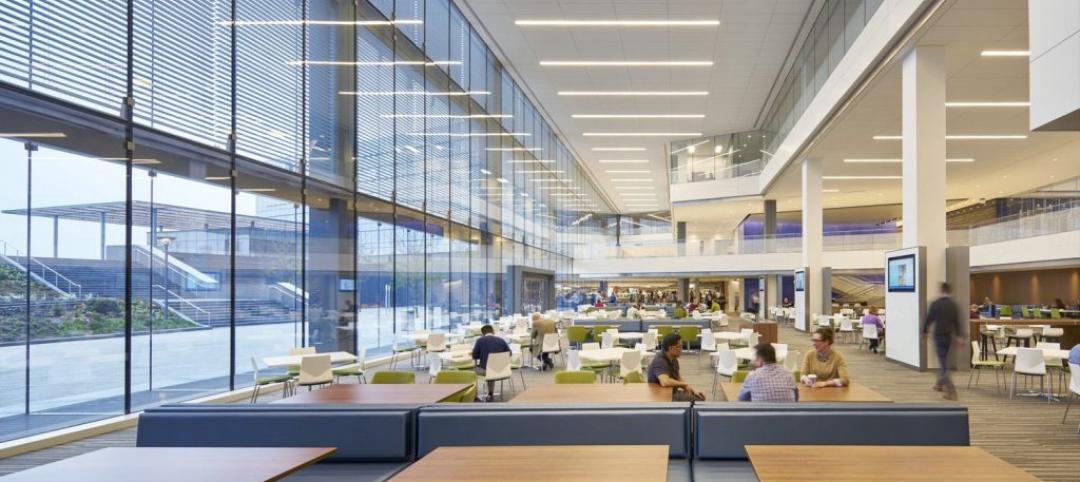Employees place more value on physical elements that support well-being and convenience—such as natural light, views of the outdoors, and food—than on “service” amenities like fitness centers and onsite childcare.
That’s one of the findings of a new survey that examines how workplace experience can boost employee engagement. CBRE’s Workplace practice analyzed responses from more than 1,600 employees in the U.S. and Canada to gauge aspects of the work environment that impact their employee experience.
Future Workplace, an HR advisory and research firm, conducted the survey in partnership with View Inc., a technology company that focuses on creating smart and connected buildings. They sent the survey to employees of all ages, ranging from Generation Zers (4%), millennials (40%) and Gen Xers (38%) to baby boomers (17%) and even the Silent Generation (less than 1% of responses).
There was only marginal generational variation in workplace dissatisfaction levels. Indeed, the majority of those polled (71%) report feeling involved in and enthusiastic about their work and organizations. More than half (57%) said they would recommend their company to someone seeking work.
But the survey wondered just how deep this enthusiasm is, especially when 51% of respondents exhibit low engagement (at best, they are neutral about their workplaces), and 35% exhibit only moderate engagement.

The survey shows that a sizable portion of workers still aren't all that satisfied with their workplace's flexibility or amenities.
The most valued perks or amenities in offices include view of outdoors and natural light (which 53% of respondents cited), an onsite café (44%), a kitchen (37%), and open office space (28%). “Integrated strategically, food is a key element of fostering community and culture within an organization,” the report states. There are also any number of variables that can impact employee engagement, including trust in management and its willingness to listen to new ideas, shared values, opportunities for career advancement, leadership support, and workplace flexibility.

Regardless of how tech savvy they are, employees still want simplicity in the digital tools they use at the office.
The results of the survey reveal that to drive increased engagement and organizational impact, workplace investment should target creating an emotional connection between employees and their employers. When leveraged, the physical environment provides an opportunity to reinforce these emotional elements of workplace experience.
“Trust is reinforced by environments that make employees’ impact and work processes visible. Values are signaled by space allocation hierarchy and investment in experiences that support culture, well-being and ease of work,” says Nina Charnotskaia, Senior Director of CBRE’s Workplace practice.
The survey confirms a trend that’s been happening for a while in workplaces across the country: The office is no longer simply a place for work; it is a destination where employees connect, feel a sense of community, understand organizational objectives and feel their impact on a greater whole.

This “Opportunity Matrix” prioritizes investments toward employee engagement.
CBRE created an “Opportunity Matrix” to guide companies’ prioritization of investment for impact into four actionable quadrants: Improve, Transform, Maintain, and Nurture.
For example, the “transform” quadrant highlights the most impactful elements of experience, including trust in leadership, opportunities for professional development, and experiences that drive organizational culture. These elements need investment to achieve their greatest potential in transforming engagement.
The “nurture” quadrant suggests that employees already feel recognized, supported and valued at work, and they are engaged as a result. These experiences must be nurtured and held to the standards employees are accustomed to or they could challenge engagement in the future.
Treating the workplace as a tool that reflects and supports organizational values changes the priority of certain workplace investments. Commercial real estate leaders must understand what each investment decision is “saying” to employees and optimize it for the intended message.
“If senior management can impact employee engagement positively, it can influence better recruitment and retention of talent,” says Damla Gerhart, Senior Managing Director of CBRE’s Workplace practice.
Related Stories
Giants 400 | Aug 8, 2019
Top 100 Office Sector Engineering Firms for 2019
Jacobs, Burns & McDonnell, WSP, Thornton Tomasetti, and Arup head the rankings of the nation's largest office sector engineering and engineering architecture (EA) firms, as reported in Building Design+Construction's 2019 Giants 300 Report.
Giants 400 | Aug 8, 2019
Top 200 Office Sector Architecture Firms for 2019
Gensler, AECOM, Perkins+Will, Stantec, and HOK top the rankings of the nation's largest office sector architecture and architecture engineering (AE) firms, as reported in Building Design+Construction's 2019 Giants 300 Report.
Giants 400 | Aug 8, 2019
2019 Office Giants Report: Demand for exceptional workplaces will keep the office construction market strong
Office space consolidation and workplace upgrades will keep project teams busy, according to BD+C's 2019 Giants 300 Report.
Office Buildings | Jul 12, 2019
How Millennials, Gen Z, and technology are changing workplace design
In the workplace, the only constant is change.
Office Buildings | Jul 11, 2019
Designing successful workplaces for an unknown future
The traditional model of signing long-term leases, committing extensive capital to an inflexible solution, and then calling it a day is no longer viable.
Office Buildings | Jul 5, 2019
This will become the tallest shipping container building in the world
Patalab is designing the building.
Design Innovation Report | Jun 25, 2019
2019 Design Innovation Report: Super labs, dream cabins, office boardwalks, façades as art
9 projects that push the limits of architectural design, space planning, and material innovation.
Office Buildings | May 29, 2019
Smart buildings can optimize wellness
Employees want wellness initiatives built into their work experience, especially when they’re in spaces that can leave them feeling stiff, stressed, and sick.
Office Buildings | May 29, 2019
HQ2 in cue: Amazon’s Arlington, Va., headquarters has energy-efficient design
With more than two million sf of LEED-certified office space planned, Amazon's new designs for its second headquarters in Arlington, VA, also will have green space, a one-acre park, and bicycle and public transportation access.
Sustainability | May 28, 2019
Carrier’s world headquarters in Florida goes green
The structure is the first commercial building in Florida to achieve LEED Platinum v4 Certification.

















